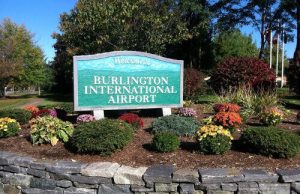What Major Airports are There in Vermont?
Vermont is one of the smaller U.S. states (ranked 45th by territory) with few airports. There are 17 airports in Vermont, with 10 serving general aviation. Many airports offer private flights to Vermont’s popular cities like Stratton, Stowe, Woodstock, etc.
Burlington International Airport (BTV) is the major VT airport and the only one with international status. Before the Covid-19 outbreak, the airport handled international flights, primarily to and from Canada. Its numbers for passenger volume and aircraft operation grew swiftly (about 9% annually) until 2020, placing it second among quickly growing airports of the U.S. BTV serves roughly 700,000 passengers per year, accounting for about 0.07 percent of all air travelers in the United States, and is considered a non-hub airport.
Rutland—Southern Vermont Regional Airport (RUT) is the second one among Vermont airports. It handles domestic and in-state flights.
List of Airports in Vermont
What Airlines Fly To Vermont?
Despite a considerable reduction in passenger flow and even airline withdrawal in the year 2020 led to a significant drop in passenger volume and even airlines’ withdrawal, major airlines continue to schedule flights to and from Vermont airports. Charter and feeder carriers are also available.
The following airlines offer tickets to Vermont:
Most Popular Destinations
As there are only a few major points on the Vermont airports map, the most popular are these two:
Vermont Aviation History
Aviation in Vermont started with the initiative of two teenagers, George Schmitt and Charles Hampson Grant, who invented air gliders after the renowned Wright brothers’ flight. Their first flights took place in 1909 and 1910. Afterward, they both continued their construction experience and assembled the powered aircraft.
The development of airports in Vermont began with the purchase of two farms by James Hartness in 1916 and the establishment of an airport in North Springfield. Though the airport’s inaugural ceremony was marred by an aircraft crash, its further operation has considerably promoted aviation development in the state. In 1921, a flight school was established in the airport.
In 1932, Robert Bassett, a granite operator, sponsored a flight from Barre-Montpelier Airport to Oslo, Norway, one of the most prominent Vermont airports at the time. Though the flight was unsuccessful, with the plane disappearing with both pilots, it served as a watershed moment for aviation pioneers. The following years brought the development of airports and flight schools, military bases (during WWII). In the postwar period, passenger aviation began to grow continuously, with a slight decline in the 2010s.


